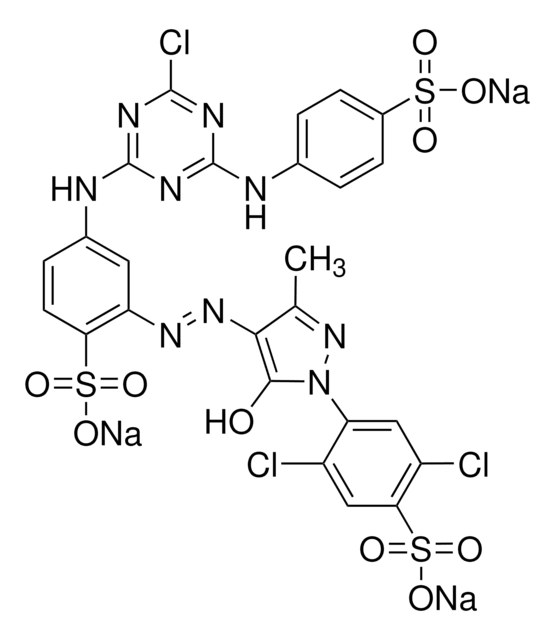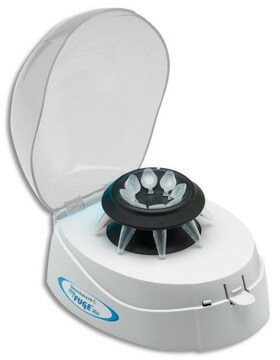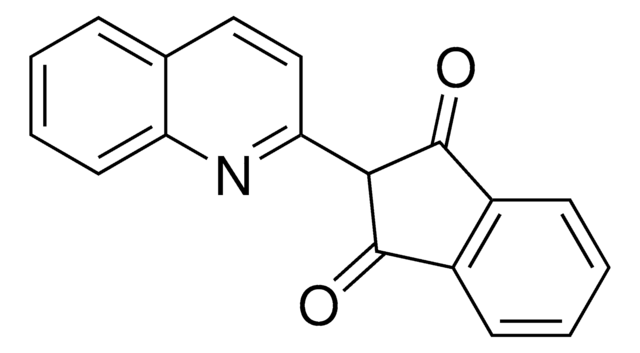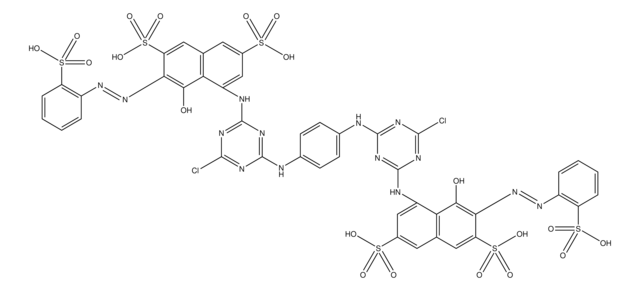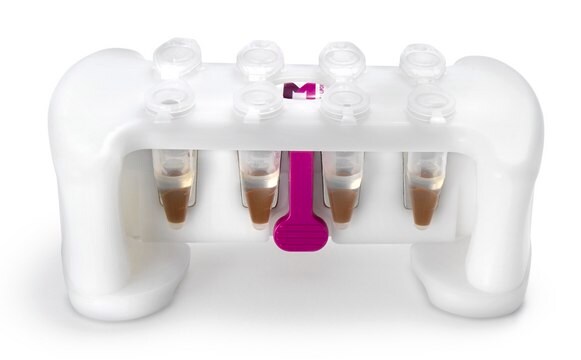Key Documents
201375
Brilliant Yellow
Dye content ≥50 %
Synonim(y):
Direct Yellow 4
About This Item
Polecane produkty
Postać
powder
Poziom jakości
skład
Dye content, ≥50%
metody
titration: suitable
visual transition interval
6.5-8.0, orange to red-orange
λmaks.
497 nm at 0.1 N in NaOH
ε (współczynnik ekstynkcji)
≥37000 at 260-268 nm
≥37000 at 486-494 nm
Zastosowanie
diagnostic assay manufacturing
hematology
histology
temp. przechowywania
room temp
ciąg SMILES
[Na+].[Na+].Oc1ccc(cc1)\N=N\c2ccc(\C=C\c3ccc(cc3S([O-])(=O)=O)\N=N\c4ccc(O)cc4)c(c2)S([O-])(=O)=O
InChI
1S/C26H20N4O8S2.2Na/c31-23-11-7-19(8-12-23)27-29-21-5-3-17(25(15-21)39(33,34)35)1-2-18-4-6-22(16-26(18)40(36,37)38)30-28-20-9-13-24(32)14-10-20;;/h1-16,31-32H,(H,33,34,35)(H,36,37,38);;/q;2*+1/p-2/b2-1+,29-27+,30-28+;;
Klucz InChI
YLDIUICHQPKMNH-MAPAHAHLSA-L
Szukasz podobnych produktów? Odwiedź Przewodnik dotyczący porównywania produktów
Opis ogólny
Zastosowanie
Kod klasy składowania
11 - Combustible Solids
Klasa zagrożenia wodnego (WGK)
WGK 3
Temperatura zapłonu (°F)
Not applicable
Temperatura zapłonu (°C)
Not applicable
Środki ochrony indywidualnej
Eyeshields, Gloves, type N95 (US)
Wybierz jedną z najnowszych wersji:
Masz już ten produkt?
Dokumenty związane z niedawno zakupionymi produktami zostały zamieszczone w Bibliotece dokumentów.
Klienci oglądali również te produkty
Nasz zespół naukowców ma doświadczenie we wszystkich obszarach badań, w tym w naukach przyrodniczych, materiałoznawstwie, syntezie chemicznej, chromatografii, analityce i wielu innych dziedzinach.
Skontaktuj się z zespołem ds. pomocy technicznej